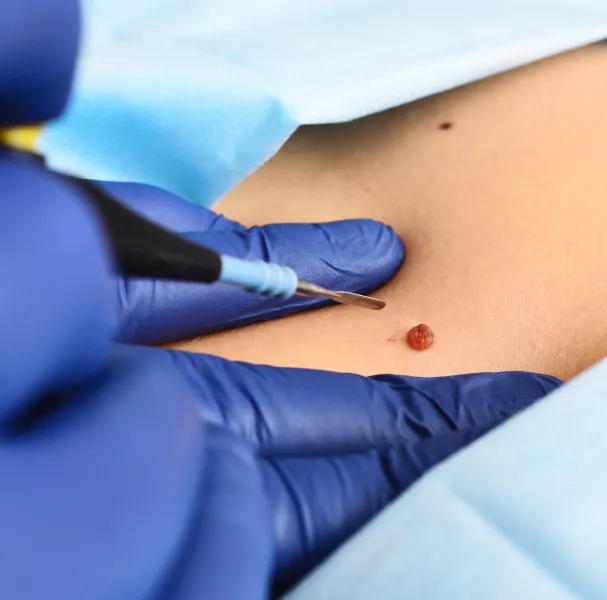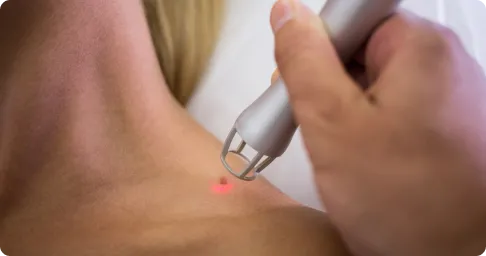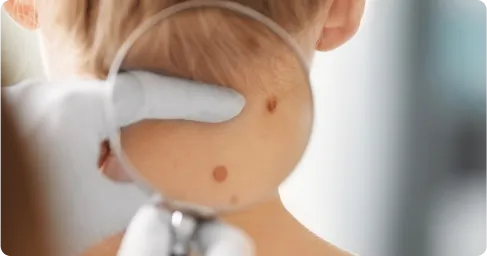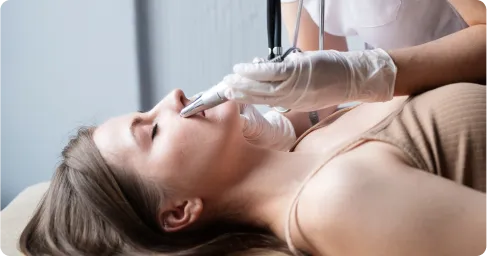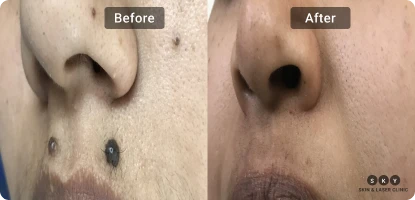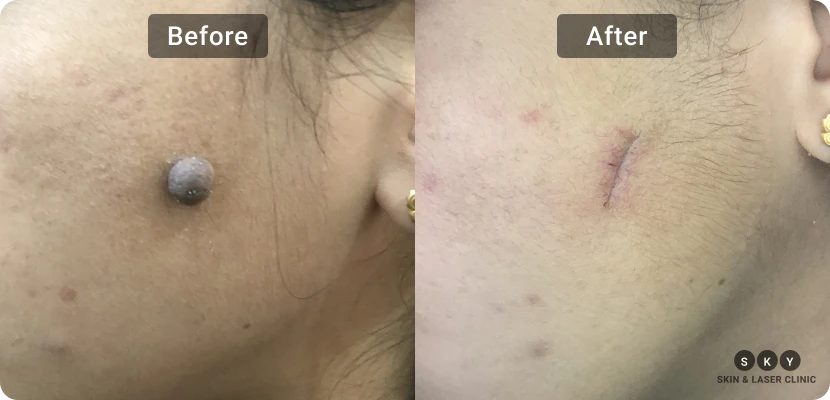1. Before Treatment (Pre-Treatment Care)
First Visit:
The dermatologist will check the mole to understand its size, type, and where it’s located. They will also look for any risks. Sometimes they might do a biopsy or dermatoscopic test to ensure it’s not cancerous.
Choosing a Treatment:
The doctor will suggest the best way to remove the mole. This could include laser, shave removal, radiofrequency, or surgery depending on its features.
Things to Do Before Treatment:
- Stay out of the sun before your appointment.
- Stop applying antibiotics or medical creams to the mole area a few days ahead.
- Let us know if you’re on any medication or have health issues.
What Happens During Treatment
Preparation:
The doctor will clean the treatment spot and use a local anesthetic to numb it. This helps make sure there’s no pain during the process.
Removal Procedure:
- For laser or RF targeted energy pulses help break apart or vaporize mole tissue.
- For surgical or shave excision, the doctor uses sterile tools to take out the mole.
Time Taken: The entire procedure takes about 15 to 30 minutes. This can vary based on how many moles there are and their size.
Immediate Aftercare: The area may get an antiseptic cream or dressing to keep it protected right after the procedure.
After the Treatment (Post-Treatment Care)
Healing Time:
Slight redness or light scabbing often clears up in about 7 to 10 days. Do not pick at the spot as it might lead to scars.
Care After Treatment:
- Clean and dry the area .
- Use any creams or ointments you were told to apply.
- Stay out of the sun and make sure to apply sunscreen.
- If the spot is on your face, avoid using makeup there for a few days.
Check-In:
We plan a follow-up in 1 to 2 weeks to check how it healed and if you're satisfied with the results.







